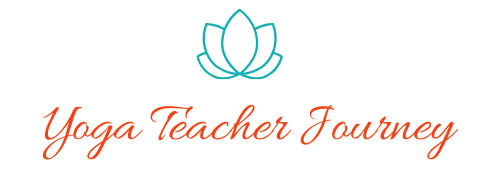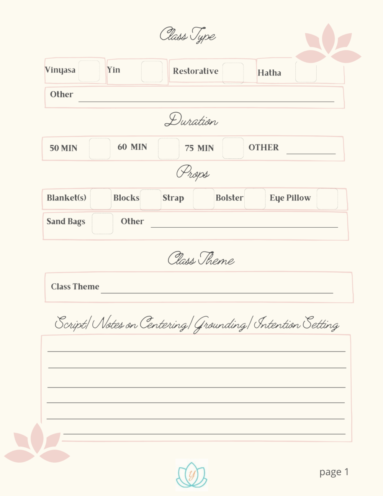Do you currently use mudras while teaching your yoga classes? If so, how do you introduce them throughout your class? As with the other aspects and traditions of yoga, if we are going to teach students about them we should do so accurately and responsibly. Read on to deepen your understanding of mudras.
WHAT IS A MUDRA?
To start, what is a mudra? The definition of the Sanskrit word mudra is a “gesture” or “seal,” which we use to direct prana (energy) in a specific way and for a specific purpose through our bodies. The use of mudras can be a powerful healing tool when used alongside pranayama, meditation, and asana.
“Each individual mudra has unique symbolism and is thought to have a specific effect on the body and mind by clearing energetic pathways” (https://www.yogapedia.com/definition/5027/mudra). There are various types of mudras (hand, body, eye, consciousness), but this post will focus on hasta (hand) mudras most commonly used in yoga classes.
Mudras have been around for thousands of years and there are hundreds of mudras used around the world. You have most likely seen images and statues of gods, and goddesses depicted with their hands in one of many mudras. One of the most common is the Abhaya mudra, with the deity holding their right hand at chest level, palm facing out. The left hand either resting in their lap, on their thigh or on their heart. This mudra dispels fear and offers protection and peace.
COMMUNICATING THROUGH OUR HANDS
If you think about it, we use our hands and fingers in many shapes to communicate in our modern world. Importantly, we use hand gestures to communicate sign language for the hearing impaired. We wave hello, clap in excitement, cross our fingers for good luck, use our peace fingers, thumbs up, the okay gesture, place a hand on the heart when we are moved by something, or hold a palm face out to stop someone from proceeding. You can probably think of others, but I’ll stop here.
COMMONLY USED MUDRAS
The Chin Mudra (also known as the Jnana or Gyan mudra) is one of the most well-known mudras in yoga, joining human and universal consciousness.
This mudra calms the mind and brings oneness into our practice. The book, Mudras, Yoga in Your Hands, by Gertrud Hirschi, explains the symbolism of the Chin Mudra. “The thumb is symbolic of cosmic (divine) and the index finger is symbolic of individual (human) consciousness. The ultimate and primary goal of yoga is the oneness of humanity with cosmic consciousness. With this gesture, the human being expresses this desire, this longing.”
It is commonly used by placing the hands above the knees in meditation, but can be used in other asanas too. I’ve used it in Ardha Matsyendrasana (seated twists), Natarajasana (dancer), even Vrksasana (tree pose) placing one hand on the extended knee and one in the air.

Anjali Mudra (sometimes called Atmanjali) is known as the gesture of prayer.
It is commonly used at the beginning or end of yoga classes as a salutation. As we bring our palms together in front of our heart chakra, and connect our thumbs to our heart, we can bow our head to our heart in respect and gratitude towards ourselves and towards others. This mudra is commonly used in conjunction with “namaste,” which means, “I bow to you,” or “the light within me recognizes and honors the light within you.”

Dhyana (or Dhyani) Mudra is the mudra of meditation.
It is practiced by placing your hands in your lap with your left hand laying in your right with the thumbs joining together. In this way they create a bowl. I like to teach this gesture as thinking of everything in the universe containing energy, so the space in this bowl will be filled with new energy as well. As we focus on breathing in meditation, we can choose to channel positive energy into our bowl with positive thoughts and feelings.

Lotus (or Padma) Mudra is a symbol of purification.
As you place your palms together, begin to separate the center fingers, keeping the pinkies and thumbs joining together representing a budding lotus flower. Continue separating the center fingers. This mudra is connected to our Anahata (heart) chakra. In addition to keeping your hands at heart center, I enjoy teaching this mudra as we lift our arms in Vrksasana (tree pose) representing the lotus flower growing up through the mud and muck reaching for the light – symbolic of our human experience.
You can also begin with a closed lotus mudra (all fingertips joined together) and open into the lotus flower as above, symbolizing new beginnings.

Garuda Mudra relates to the mythical bird we celebrate when practicing Garudasana (Eagle pose).
It is best used to revitalize us and balances energies on the left and right sides of our brains and bodies. It is also a symbol of freedom, and in yoga mythology, Garuda was the vehicle of Lord Vishnu (the preserver), according to Tummee. Here, we join the thumbs of both hands together while spreading the other fingers wide. I like to use this mudra during standing Ardha Chandrasana (Half Moon) reaching the arms tall while bending to each side and then back to center.

Ganesha Mudra is used to strengthen the heart and to clear your path.
We know of the deity Ganesha as the remover of obstacles and the god of new beginnings. This mudra is practiced in conjunction with Pranayama. We place our left hand on our chest with the palm facing out and fingers curled. Next place the right hand in front of the left and hook the fingers on both hands together. As you inhale engage the muscles in your hands and arms and pull as if trying to pull apart the hands. On the exhale release the effort. Repeat for three rounds of breath with hands in this position, then switch so the right hand is resting against the heart and the left is facing you. Hook the fingers and proceed as above. Similarly, you can start your hands as in the illustration below, and move your left hand so the back rests at heart center.

Vishnu Mudra is most well-known for its use during Nadi Shodhana (Alternate Nostril Breathing)and is known as the gesture of universal balance.
Lord Vishnu is known as the preserver and protector of the Universe bringing balance into the world. Curl the index finger and middle finger on your right hand down towards your palm, while allowing the other three fingers to extend. The left hand can rest on your thigh. During this practice, we use the thumb and ring finger to allow us to alternate and direct our breath while inhaling and exhaling through alternate nostrils. Nadi Shodhana is known to balance the left and right sides of our brain, and is also known as Sun and Moon breath. See How to Teach Pranayama for further explanation of Nadi Shodhana.

Final Thoughts
In addition to those listed above, I enjoy using the Bhu Mudra for grounding, the Vajra Mudra when focusing on the Manipura (Solar Plexus ) Chakra, and Kashyapa (Turtle) Mudra for protection, and others from time to time.
Important Note: As you research mudras, you may find differing names associated with the same mudras. Remember that just as in yoga asana, mudras come from ancient traditions passed down through centuries. Names can differ due to geographical origin, religion, tradition, and lineage.
Finally, just as with asanas, you can give mudras your own names too! During Thanksgiving practices, I change the Garuda mudra to Turkey mudra! It’s important to have fun with teaching mudras and yoga. If you do change a mudra or asana name it’s probably wise to teach your students the correct name too.
Happy teaching!
Additional Resources:
The Healing Power of Mudras: Yoga of the Hands by Rajendar Menen
Mudras, Yoga in Your Hands by Getrud Hershi





